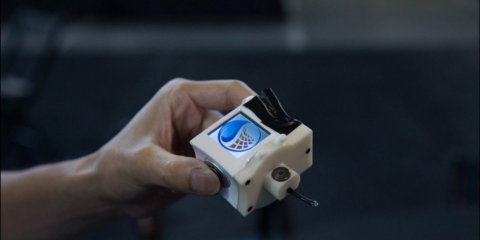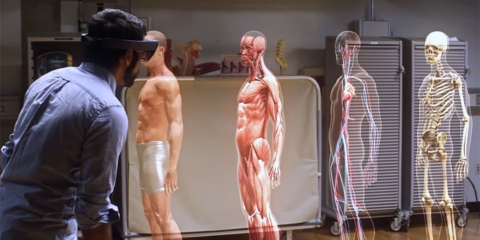Would you like to get notifications from Christian?
What happened?
Manufacturing extremely thin solar cells using sustainable materials and a 3D printer accurate down to the nanometre: that is the focus of research currently being carried out by Prof. Dr. Julien Bachmann, Chair ‘Chemistry of Thin Film Materials’ at FAU. He has now received an ERC Proof of Concept grant for his project. ERC Proof of Concept grants are awarded to researchers who have already received an ERC grant and are now at the stage of exploring potential economic or social benefits of their findings in practice. In his earlier research, Professor Bachmann was able to show the impact that the surface structure of semiconductors has on the efficiency of solar cells at the smallest level. With a high-resolution 3D printer that is accurate down to 0.000001 millimetres, he now hopes to systematically test which surface structure makes the semiconductor most efficient. This optimisation process is necessary if sustainable materials are to be used in the field of renewable energies.
Read the original article here: https://bit.ly/3gPSO7x
Why is this important?
It has been a big year for solar energy. California passed a mandate requiring solar panels on all new homes, and prices for solar cells continue to plummet. But even with these advances, there are still challenges to bringing solar energy into the mainstream. One of the biggest obstacles is manufacturing, it’s expensive and time-consuming to produce traditional solar cells using high-temperature processes. But what if we could print them? Researchers have developed a way to print solar cells using ultra-high-resolution 3D printing, paving the way for low-cost, mass production of solar energy technology. If we are able to produce high-efficiency, low-cost solar panels without the need for an expensive solar panel factory, then this might be a massive breakthrough in building a more regenerative society.
Christian is a futurist and trendwatcher who speaks about the impact of exponential technologies like AI on organizations, people, and talents. Christian tailors his presentations to your audience’s specific industries and needs.




Embracing the advancements of technology and AI can enhance our humanity. We can focus on developing our unique talents and skills by automating mundane tasks and freeing up our time. As humans, we can adapt and learn, allowing us to evolve and stay relevant in a rapidly changing world constantly.


Organizations will need to be more fluid, dynamic, and adaptable: the ability to change and adjust in response to new situations and environments. We are on the cusp of a new era of organizations, ones that are more fluid and agile and which behave like swarms we see in nature.




In the future, 3D printing and generative design will allow for products to be designed in a more decentralized manner, and production will take place closer to the customer and fully on-demand. 3D printing technology will also allow for more customization and personalization of products.


The agricultural industry is ripe for disruption. Robotics, AI, and IoT are all technologies that have the potential to radically transform the way we grow food. In combination with vertical farming, these technologies could increase the efficiency and quality of agricultural products.

A human-centered society is one that puts people first and where technology is used to unite and empower people. It is a society that values biological life and dignity above all else. It is a society that recognizes the importance of human relationships and works to strengthen them. In a human-centered society, all members of the community are valued and treated with respect.


The future of healthcare is here. New technologies like AI, IoT, big data, and smart sensors make it possible to become the CEO of your own health. Imagine that your phone can listen to your voice and AI algorithms can detect small nuances in the tone of your voice that indicate specific diseases.
